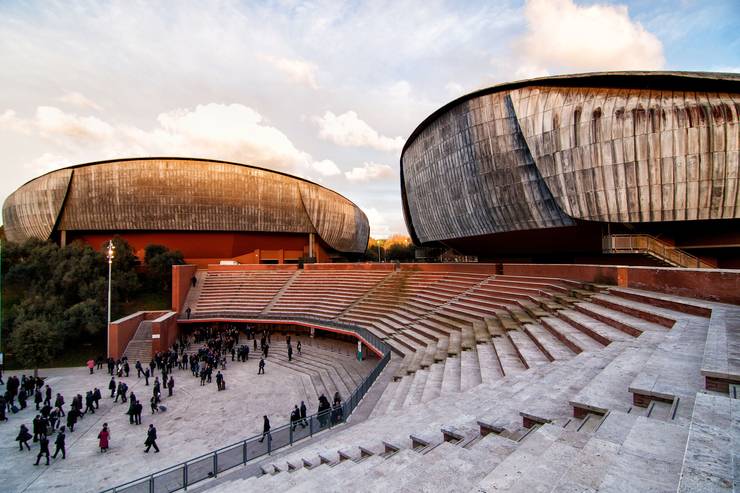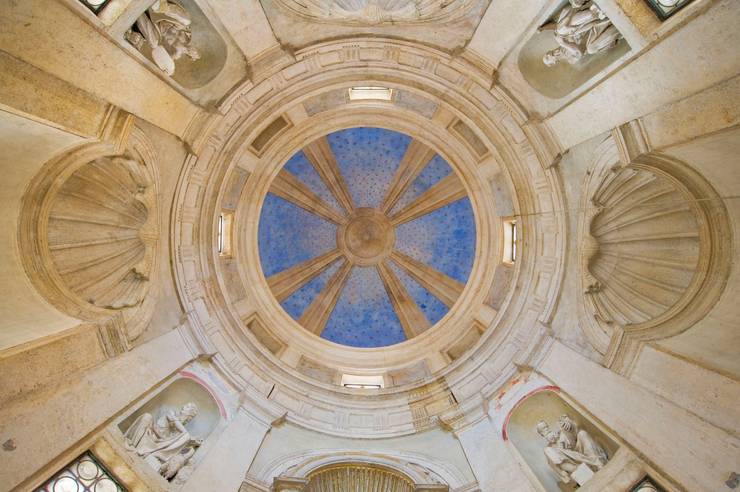Rome travel guide
Architecture
In addition to its well-known historical icons and outlandish opulence, Rome’s architectural footprint comprises some severe modernism and contemporary twists (although we do point you in the direction of one of its unmissable older gems). You’ll quickly find that the city is a lot more than cobbled streets and romantic rooftops.

Auditorium Parco della Musica, Flaminio
Completed in 2002, this cluster of auditoriums has come to be regarded as one of Renzo Piano’s most successful designs. The arrangement centres on three large concert halls: the Sala Petrassi, which seats 700; the Sala Sinopoli, with a capacity of 1,200; and the Sala Santa Cecilia, which seats 2,800. The three structures are completely independent, each with its own beetle-like shell and individual character, but are grouped together in an architectural tête-à-tête. They form an inviting backdrop to outdoor performances or you can take a stroll around the raised gardens that surround them. The trio quickly numbered among Europe’s most frequented cultural music destinations and no wonder: together they are a perfect orchestration.
30 Via Pietro de Coubertin, 00196+39 06 8024 1281
auditorium.com


Maxxi, Flaminio
Rome might be lacking in truly contemporary architectural gems but the completion of Zaha Hadid’s elegant museum in 2010 made up for lost time. The museum was no small undertaking – it was under construction for more than 10 years – but when the gates finally opened they revealed what has been dubbed Hadid’s best building. From above, the museum resembles a tangled motorway intersection; from the ground its curves flow beautifully. In the galleries, walls become floors and floors transform into ceilings, such was Hadid’s way with dynamics. The museum is a British design but the material and labour were sourced in the region, pleasingly putting Rome’s 2,000-year-old concrete-making industry to modern-day use.
4A Via Guido Reni, 00196+39 06 320 1954
maxxi.art

Tempietto di Bramante, Trastevere
The Tempietto, dating from the early 1500s, is generally considered to be one of the true architectural masterpieces of the Italian renaissance. The work of Donato Bramante, who went on to design the great Basilica of St Peter’s, it is small and almost hidden within the rather unremarkable courtyard of the church of San Pietro in Montorio. With the patronage of Pope Julius II and the king and queen of Spain, Bramante studied the ruins of various circular ancient Roman temples, taking celestial inspiration for this perfectly proportioned building. It was built as a commemorative tomb, so the structure lacks in practical function but its simplicity and harmony made it a kernel from which future great designs were to sprout.
33 Via Garibaldi+39 06 581 2806
turismoroma.it
Images: Alamy, Iwan Baan

